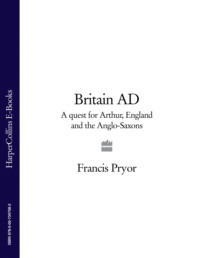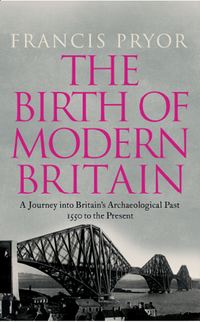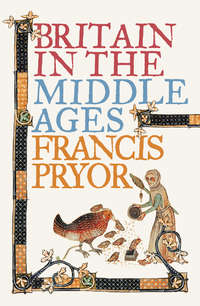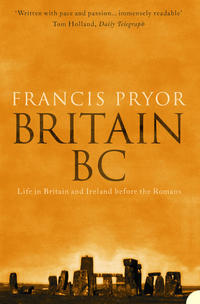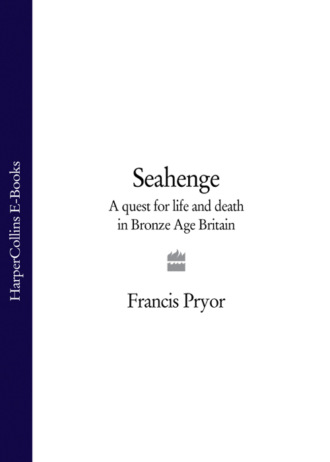
Полная версия
Seahenge: a quest for life and death in Bronze Age Britain
Gary saw John standing slightly bent forward, with furrowed brows, turning the thing over and over in his hands, and wandered across to see what he’d found. John was always collecting things from off the beach. He was a regular jackdaw. His house a few miles away at North Creek was stuffed full of treasures: shells, blanched bones, driftwood, weird-shaped stones, pieces from wrecks. If he found anything attractive, John would want to take it home.
Gary looked at the piece of metal, shook his head and agreed it was probably something from the wreck. But they had work to do, so they thought no more about it. True to his jackdaw instincts, John slipped it into his back pocket. By now the tide had retreated well beyond the peat, and the timbers of the wreck were fully visible, surrounded by huge expanses of smooth, damp sand. Together John and Gary carried the net out into the shallow water, just above knee-depth. Then they tested it. It worked. In fact it worked well, and is in regular use to this day.
John and his wife Jacqui are special-needs workers, who look after children with particular problems. John has found that taking his charges out in the mini-bus for a trip to the beach can do wonders for them. But they must have something useful to do when they get there, or they soon get bored, and mischief is never far behind. Towing a shrimping net and then sorting through the catch is ideal. And once the work’s over, the small brown shrimps are delicious for tea.
During the next four weeks, John visited Holme beach regularly, seeking crabs and shrimp. He would often return to the spot where he had found the metal object, which he was becoming increasingly convinced had nothing to do with the wreck. The more he looked at it, the more certain he was that it was an axe. With its crescent-shaped blade, he reasoned, it couldn’t be anything else.
It was a week or two after finding the object that he first noticed a large tree-trunk, with two strange-looking branches, like the stumps of amputated arms. It was close to the spot where he’d made his discovery, and was the same colour as the peat beds around it. But it looked odd. As he told me later, he couldn’t put his finger on why it looked so strange, but it did. Just like the metal object, there was a simple explanation, but it didn’t seem to apply. Holme beach was the site of a prehistoric ‘forest bed’ of tree stumps. And that’s what everybody said: his odd-looking stump was just part of the old forest. But John wasn’t happy with that explanation.
The peat didn’t actually touch or cover the strange stump, but stopped three or four paces short of it. John noticed that as the tide swirled around it, the water wore the sand and mud from around the trunk. Soon a natural trench began to form, and he was able to feel well down into the grey mud that lay directly below the beach sand into which the tree was embedded. He knew that not even the deepest roots of the forest trees went down this far.
The weeks passed, and John couldn’t stop thinking about that peculiar metal object that now sat on the mantelpiece at home. The more he looked at it, the more he became convinced that it had nothing to do with the wreck, which was less than a century old – the remains of a freighter that used to ply a regular route from Norway to King’s Lynn, carrying ice. Besides, he knew what a ship’s fire-fighting axes looked like, and this bore no resemblance to them.
One evening he took it down from the shelf and examined it, long and closely. Various things struck him as odd: the clear casting line where two moulds had once joined together; signs of hammering at one end, and at the other the smoothly crescentic cutting edge. It was certainly an axe, but it wasn’t like any axe he had ever used. For a start, there was no hole for a shaft. And besides, it was made from bronze or brass, not from steel. Then he had a bright idea. A friend of his in Fakenham was a keen metal-detectorist, and took all the magazines. Maybe he’d know what it was.
The next day found John in Fakenham with a cup of tea and surrounded by dozens of magazines. He leafed through them. There were stories about horse brasses, about Roman coins, about merchants’ tokens, about buckles, about everything under the sun – except axes. Then he struck lucky: in an article about Bronze Age metalwork he found a picture of a three-thousand-year-old bronze axe that looked fairly similar to his. It was by no means identical, but it was certainly close enough to set his mind racing.
In the days that followed he couldn’t let the matter rest. Again and again he thought, if it was a Bronze Age axe, then how on earth did it get there? Was it from an ancient wreck, or what? The more he pondered, the more curious he became. Eventually he phoned the Castle Museum at Norwich and described the object. The voice at the other end sounded interested. Could he bring it round to them?
The axe was at the Castle Museum for about four weeks. They were in no doubt that it was Bronze Age, and had been made around 1200 BC. They couldn’t find a local axe in their collections that was anything like it. Their best guess was that it may have been made in Ireland.
While he waited to hear from the museum, John returned to Holme beach several times. He noticed that the tide was slowly wearing away the surface around the strange stump. Then one day, a few feet away, he spotted the top of another stump. The next day he found another one. And then another. By the end of the week he could clearly discern a circle of stumps around the much larger central tree. The stumps had been hidden below the sand and mud, and as the tides swirled around the central tree they were gradually being exposed to the air.
John studied the smaller stumps closely. The circle was positioned on the seaward side of the peat beds; close to them, but not beneath them. Were they all tree stumps from a drowned forest? He knew that was the explanation for most of the wood found on the beach. But a circle? How could that be natural? Surely that had to be man-made?
By now John knew he had found something important. But how could he get somebody ‘out there’ interested? He lost no opportunity to talk about his discovery, but nobody seemed to take him seriously. John and his axe and his stumps. He began to feel that people were starting to laugh about him behind his back. Eventually someone came out from the museum to have a look at John’s circle. The expert pronounced that it was probably a fish trap or a salt pan, then walked over to the old wreck and spent the rest of the afternoon photographing that. John told me later he could have exploded with frustration.
In August, two weeks after the visit from the museum official, John received a letter from him in which he was told that, far from being unimportant, his find was causing great interest in the museum world. Next, he was contacted by Mark Brennand and Dr Bill Boismier, two members of the Norfolk Archaeological Unit, the team of archaeologists whose job was to investigate new discoveries in the county. They came to Holme beach to have a look, and John showed them the circle of stumps and the strange-looking tree at their centre. Mark and Bill took one look and stood back in silence, thunderstruck. Words seemed superfluous.
John was desperate to know more, but Bill wasn’t willing to commit himself. A man of few words at the best of times, he was not going to raise any false hopes at this stage. His field of expertise was the effects of tillage processes on artefact distributions in the ploughzone. Tillage processes had nothing to do with prehistoric religion, but in their hearts Bill and Mark knew what that circle of ‘stumps’ was. And it certainly wasn’t something as mundane as a fish trap or salt pan. As they drove back to the Unit, they could talk of nothing else. Was it really what they both thought? Could it be? They must get some further opinions. That evening, the phone lines from the Norfolk Archaeological Unit hummed.
CHAPTER ONE Setting the Scene
ARCHAEOLOGY IS ABOUT human life in the past, but in my experience it isn’t as simple as that. Very often it’s about the life one is living in the present, too. I’ve no idea how it happens – and I know from talking to friends and colleagues that others have experienced this as well – but in some strange way archaeological discoveries happen that are appropriate to the way one is thinking at a given time. When, for example, I started my professional life in 1971, I excavated a well-known site at Fengate, on the eastern side of Peterborough. Here I began to discover details of the way prehistoric people organised their daily lives. This suited me fine, as I was then concerned with practical things too, such as how to organise a large excavation, how to assemble coherent published reports, and so on.
About ten years later, I became more interested in the way people thought, and how they ordered their religious and social lives. And what happened? I found myself working in a prehistoric landscape strewn with religious sites, near a small village in Cambridgeshire called Maxey. This more than whetted my appetite for ideology and the afterlife. I was treated to both in ample measure when I then excavated a large Neolithic ceremonial centre at another small village called Etton, near Maxey. But still I wanted more. And it was then, in 1982, that I had the good fortune to discover the extraordinary Bronze Age religious site at Flag Fen, near Peterborough.
Flag Fen is a wonderfully rich and complex site, and understanding it – or rather, trying to understand it – has stretched my imagination to the limits, and has been an invigorating and rigorous (although sometimes very frustrating) challenge. It was while I was deeply immersed in Flag Fen in 1998 that John Lorimer reported his remarkable discovery on Holme beach. And then things began to fall into place, and I realised I had to step back from Flag Fen. I was forced to appreciate that prehistory is best understood as an unfolding, continuing story. It is not about individual sites, however fascinating they might be, but is a saga of human beings, and the different ways they chose to cope with their own particular challenges.
The process of archaeological discovery has been deeply enmeshed with my professional life, and I don’t see how the two can be disentangled. So I won’t attempt the impossible, but will tell the tale as it unfolded around me, blow by blow. My own life and my research life will be part of the same story. But first I must turn the clock back to the final years of my childhood, when the wonders of archaeology were first revealed to me. It was an afternoon that will live with me forever. The time was autumn, the year 1959, and the place Eton College.
There was a warm, dusty smell to the wood-panelled room. A smell I have grown to love: of old books and maps, field notes, brown paper bags, Indian ink, pottery and flint tools. It’s a musty, peaceful sort of smell. A smell that says the world is in proportion. Perhaps it is the atmosphere of antiquity – I don’t know. But whatever it was, it pervaded the Eton College Myers Museum of Egyptology through and through.
George Tait was a senior master, and in the late fifties he was also Curator of the Myers Museum, which was housed in a purpose-built wing at the rear of School Hall. One day I found him working on several heaps of papers, which lay across the big central table and cascaded down to the floor by way of three chairs, an old orange crate and something that had once resembled a foot-stool. He could see I was at a loose end. My head was bandaged from a football injury I had received the day before, and the prospect of a tedious afternoon stretched before me.
‘Wait,’ he said. ‘I’ll find you something to sit on.’ He cleared away the papers from one of the chairs, then said, ‘I’ve got something over here that may interest you.’ After a moment or two, he reappeared holding two huge volumes, which he placed on top of the papers already on the table in front of me. I was amazed. The two enormous tomes were for me?
George Tait returned to his side of the table and lit his formidable pipe. It was a vast smoking machine with a long, straight stalk and a furnace-like bowl, doubtless hewn from timbers drawn from a mummy’s tomb. Into this he stuffed leaves picked from plants grown in his own garden. The dense clouds of smoke smelled just like an autumn bonfire, and bore no resemblance whatsoever to the distinctive aroma of tobacco. Soon my eyes were running freely. But George puffed on regardless, poring over his papers. He was miles away.
I started to read. I had been given Howard Carter’s account of the discovery and excavation of Tutankhamun’s tomb in 1922. It was an inspired choice, and I soon found myself completely gripped by the story of the discovery of the boy king’s mummified body and the fabulous treasures which surrounded him. As I read, I was there, amidst the sands of the Nile and the eerie, cool, dry darkness of the tomb.
After that day I made many visits to the Myers Museum and its larger-than-life curator. But although George Tait had a huge, commanding and at times stern presence, he was a gentle teacher, and was particularly good at helping his pupils grasp difficult concepts. Thanks to him, I grasped the basic principles of the subject that would soon form the centre of my life.
Tait’s archaeology was about people and the way they had lived. It was not about treasures and valuable finds, unless they could shed light on the way ancient communities behaved. Above all else, he explained that archaeology is a methodical discipline: that although Howard Carter made all those extraordinary discoveries in the tomb, he also spent days and days preparing a minute catalogue of his discoveries. He pointed out that Carter was at pains to draw meticulous plans of where everything was found. It took me some time to realise why such care was so crucially important. With hindsight, Tait’s improvised explanation worked well.
‘Just suppose,’ he said, ‘that you’re an archaeologist working two thousand years from now. You discover a room, and in it are two armchairs and a mysterious polished wooden box with a thick glass sheet on one side of it. You have absolutely no idea what this box was used for. Maybe it was worshipped? Maybe it was used to cook with? Who knows? So you decide to seek the help of other archaeologists. Now what do you do?’
‘I send them a list of what I’ve found,’ I suggested, ‘and I describe the chairs and the shiny wooden box as closely as I can.’ It was feeble, but I couldn’t think of a more sensible answer.
‘I doubt if they’d be any the wiser. Would you be?’
I had to admit I wouldn’t.
‘But if you included a sketched plan of the way the armchairs were arranged, how they faced the glassy side of the polished wooden box, then they might work out that the box was a television set.’
He had taught me an important archaeological lesson. Things only make sense in terms of the way they relate to other things. Later I was to learn that archaeologists refer to these inter-relationships as context. To an archaeologist nothing matters so much as context. Context is all. Without context, a find is just a find, a dead object; but with context it comes alive.
My ‘gap’ year out of school in 1963, on what was then known as the Digging Circuit, taught me a great deal about life. Some of the Circuit diggers were perfectly happy to stay as they were. They moved from one dig to another, living in winter squats, tents in summer, or ramshackle caravans. One or two had drink or drug problems, and I soon realised that a high proportion of them were using the Circuit as a retreat from the rat-race. Some of these people were quite sad, but they nearly all shared a belief in what they were doing. I suppose, in the final analysis, that vocation had taken the place of self-esteem, which for many of them had reached a low ebb.
Today, things have changed for the better. For a start, most diggers have a professional qualification, or are in the process of earning one. All are vastly better paid than they were in the early sixties. Site conditions have improved enormously, too: there are self-contained mobile toilets, safety clothing and warm site accommodation. Better pay also means that tents are only used in summer, and then by choice, not of necessity. But despite all these improvements, the life of a professional field archaeologist is still hard. Job security is poor, and most people spend large parts of their lives moving from dig to dig all over the country, and abroad. And then there’s the British climate.
As a result of my afternoons with George Tait at the Myers Museum, I had decided to study archaeology at Cambridge. If you can’t think about broad issues at university, then you’ll never think about them. In our lectures, my fellow students and I learned what George Tait had drummed into me: that archaeology is the study of the past, based on material evidence – pottery, flints and scientific information – rather than on written documents alone (the province of history). We also learned that archaeology is an effective way of studying broad changes through time – topics like, for example, the decline and fall of the Roman Empire, or the origins of farming. It’s less good at examining historical events, such as the Norman Conquest – a topic like that is best handled by historians, or by historians and archaeologists working closely together.
In my first year at Cambridge, the Professor of Archaeology was a great man: Grahame, later Sir Grahame, Clark. Grahame was a pioneer of what is today called environmental archaeology. As we shall see, it will play a major role in our quest. With his friend the botanist Sir Harry Godwin, Grahame was able to paint an extraordinarily vivid picture of life just after the last great Ice Age, about seven thousand years ago. He relied to a great extent on Sir Harry’s work on the pollen grains and seeds preserved within the peats found at various sites in southern Britain. This botanical research, together with work on preserved bones, insects and shells, provided the evidence they needed to reconstruct what the ancient countryside would have looked like. It showed that nine thousand years ago the East Anglian countryside consisted of stands of birch trees and pools of open water, and that the fauna included fish, herons and other birds, eels and beavers. On the drier land were large oak forests in which deer, wild boar and bear roamed freely.
I would never pretend to be a scientist, or even a scientific archaeologist, but I can understand what scientists are saying, and I know enough to ask them questions in their own language. It was not difficult for me to decide, in my first year at university, that this broadly environmental approach would be my own style of work. All my subsequent research has been carried out in a closely-knit team; it’s the only way to do good environmental archaeology. Nowadays my role would be described as ‘Team Leader’. My job is to make sense of the team’s results when we come to write the final report; it is up to me to achieve compromise when there are strong differences between individuals, and to see that the team runs smoothly and happily. It’s a great job, and I love doing it. In my opinion it’s far and away the most successful and satisfying sort of archaeology.
Grahame Clark retired from teaching while I was a student, and he was succeeded by Professor Glyn Daniel. They were as unlike as any two archaeologists could possibly be. It used to be fashionable in certain circles to patronise Glyn Daniel. He was an archaeologist, but he was also a supremely successful populariser of the subject. No other archaeologist has ever been voted ‘TV Personality of the Year’, an accolade he earned by chairing the hugely successful BBC quiz show Animal, Vegetable, Mineral? At his best, Glyn was a superb lecturer, and he managed to inspire me with a love of his own favourite period, the Neolithic (or New Stone Age), which I have never lost.
Everything that ever mattered seems to have originated in the Neolithic Age. All of life and death is there. I know Neolithic folk have been dead for nearly five thousand years, but as far as I’m concerned they could have died yesterday. My passion for the Neolithic and the Early Bronze Age (which in social and cultural terms is much the same thing) is directly due to Glyn’s inspiration.
Glyn taught a course on the Neolithic, Bronze and Iron Ages at Cambridge. The dates of the various periods tend to wander somewhat, as research progresses, but the Neolithic comes first, and in Britain lasted from about 5000 to 2700 BC. It was followed by the Bronze Age (roughly 2700 to 700 BC). The Iron Age was the final prehistoric period, which extended from the close of the Bronze Age to the Roman Conquest of Britain in AD 43. Glyn’s course was known to the university authorities as NBI. Perhaps predictably to the students, it was of ‘No Bloody Interest’. I chose not to study the other option of Iron Age, Roman and Anglo-Saxon, or IRA – which for some reason never seemed to acquire a student name.
I remember being puzzled by archaeologists’ periods. Were Neolithic people aware when they woke up on the first morning of 2700 BC that they were entering the Bronze Age? Of course not. The Ages were invented by some inspired Danish archaeologists, working on museum collections in the last century. They came up with the Three-Age System (Stone followed by Bronze and then Iron) in the first instance simply as a way of ordering their collections. Only later did it gradually acquire a wider significance.
At university we were taught that the Three-Age System would soon be a thing of the past, to be replaced by the flood of radiocarbon dates that were then just beginning to arrive. They have indeed had a profound effect on our understanding of the past, but I can see no consistent evidence that the old Three-Age labels are actually being replaced. I think they’ll be with us for a long time yet.
At Cambridge, British archaeology was taught in a rather rigid framework, or straitjacket, of ‘cultures’. In theory, ‘cultures’ were meant to be synonymous with actual communities of people – tribes or confederations of tribes. But in reality ‘cultures’ were no more and no less than types of pottery. So we were taught about the Beaker Culture or the Grooved Ware Culture, and I have to say I found it extremely difficult to imagine the actual people lurking behind these arcane concepts.
The various ‘cultures’ were accompanied by long lists of sites, where the particular types of pottery which were believed to be characteristic of them were found. The lists were, in turn, accompanied by maps, covered with dots and arrows which purported to show how these people/pots moved around Europe. It was all extremely mystifying, and I remember wondering why on earth these people wanted to move around all the time. It seemed, and indeed it still seems, an odd way to behave.
There was a third lecturer at Cambridge who was to have a very profound influence on my subsequent career, partly because, like me, he is a practical, down-to-earth person. He comes from Canada, where I spent much time during my formative years as a field archaeologist. John Coles is remarkable because he has turned his hand to numerous types and styles of archaeology. His doctoral research was on Scottish Bronze Age metalwork, but he is also, or has been, an authority on experimental archaeology, Scandinavian Bronze Age rock carvings, the Palaeolithic (or Old Stone Age) and wetland archaeology, for which he is perhaps best known.
In the mid and later sixties John was doing far more than his fair share of lectures in the Archaeology Department, and he supervised me in a variety of topics. I don’t think I was a very good pupil towards the end of my time at university, because I couldn’t see that there was a future for me in the subject. Archaeological jobs were extremely scarce, and were invariably snapped up by people with good first-class degrees. I knew I stood little chance against that sort of competition. But John persisted, and somehow he managed to cram sufficient knowledge into my skull to earn me a decent enough honours degree.




